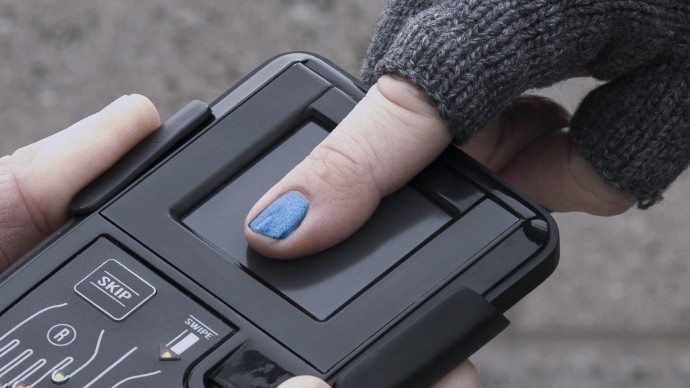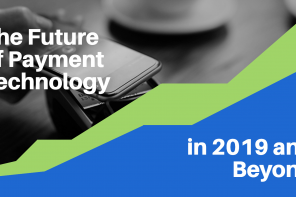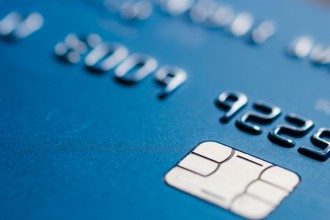According to a recent LexisNexis True Cost of Fraud study, merchants lost 1.32% of their revenue to fraud in 2015, compared to 0.68% in 2014. M-Commerce merchants were hardest hit, with 1.68% revenue loss. As of October 1st, 2015, merchants across the US will be accountable for the consequences of fraud loss, which could have been prevented by taking the necessary security and Due Diligence measures. Beginning of 2016, about 600 million Americans will have received an EMV chip Credit Card. Replacing the traditional magnetic stripe by a secure chip has been an investment the financial sector has been more than willing to make in order to prevent financial crime, but will EMV adoption prove to be enough to win this cyberwar against financial criminals?
EMV adoption in the EU considerably reduced different types of card fraud, but EMV adoption has also switched cyber criminals’ target to the relatively vulnerable card-not-present (CNP) e-commerce payments. The Federal Financial Institutions Examination Council (FFIEC) urges banks and credit unions to take customer identification processes yet another step further, by implementing technologically innovative authentication methods, which are harder to hack.
Authentication of customer ID is key in the financial sector, particularly to secure “anonymous” CNP payments in the growing e-commerce and mobile payments industry. There are three factors, crucial to verify the identity of a customer:
- Knowledge – a secret PIN code or password.
- Ownership – a card or token.
- Inherence – a persons’ unique physical features (iris, face, fingerprint, voice, unique behavior patterns).
Biometrics technology verifies a customer’s identity by screening the person’s unique features. Government Agencies already use Biometrics for i.e. border control. Financial institutions and mobile payment providers are pioneering adoption of biometrics in the payment industry, as they are challenged by a steep rise in fraud figures, parallel to the successful growth of e-commerce, m-commerce, and the development of a variety of new and exciting payment methods. Biometrics was thé 2015 buzzword in the FinTech sector!
The latest Goode Intelligence Report estimates that there will be 16 billion mobile biometric payment transactions performed this year. The global biometrics market will expand to $44 billion by 2021. Mobile biometric user authentication will considerably reduce CNP fraud. By 2020, there will be over 622 million mobile banking app downloads that support biometrics for customer authentication and transaction verification and biometrics will secure over $5.6 trillion of payments.
The advantages of biometrics identification methods are obvious, but are consumers willing to give up their privacy in exchange for faster financial services and increased protection against cybercrime? According to a Survey by Accenture, over 50% of all respondents weren’t ready to provide iris scans. Notwithstanding, consumers’ reluctance, surveys indicate that three quarter of American consumers are open to innovative authentication methods, if these methods release them from the burden of having to remember a variety of passwords.
Biometrics is bound to become mainstream. Touch IDs, fingerprints and facial recognition tools are already being used for login purpose. Apple’ s iPhone users log in with their fingerprint, Ali Baba’s “Smile to Pay” is being rolled out in China, JPMorgan Chase integrated TouchID into their mobile banking app and MasterCard announced a “Pay By Selfie” feature that will enable merchants to validate the identity of a buyer through facial recognition.
The upcoming Smart Card Alliance and the International Card Manufacturing Association (ICMA) co-hosted Payments Summit in Florida, will cover all the hot FinTech topics: EMV chip technology, contactless NFC, QRC, mobile wallets, open transit systems and… Biometrics. SmartMetric will present a new fingerprint activated EMV chip smartcard technology, a biometric payments card which fits a fully functional fingerprint reader inside an EMV smart card
In 2016, eMarketer expects mobile payments in the US to reach $27 billion, with users spending an average of $721.47 annually. Unsurprisingly, Mobile Payment players are more than willing to tap into biometrics in order to secure financial services; mobile banking app authentication, payment transaction authorization, ATM authorization and customer identification to secure card-not-present (CNP) Online Payments. Merchants will be able to verify their customers’ ID through a variety of biometrics identification methods. Google is developing its facial recognition technology to authenticate users and Samsung is exploring the adoption of Iris Identification. Through collaboration with Samsung and the FIDO Alliance, PayPal was the first payment company to introduce fingerprint biometric payment authentication on Android smartphones.
With mobile payments expected to triple next year, the urgency to manage risk by implementing biometrics into customer due diligence procedures is so high, that biometrics might prove to be more than just a buzzword… biometrics could well become e-Payment security’s Holy Grail.




